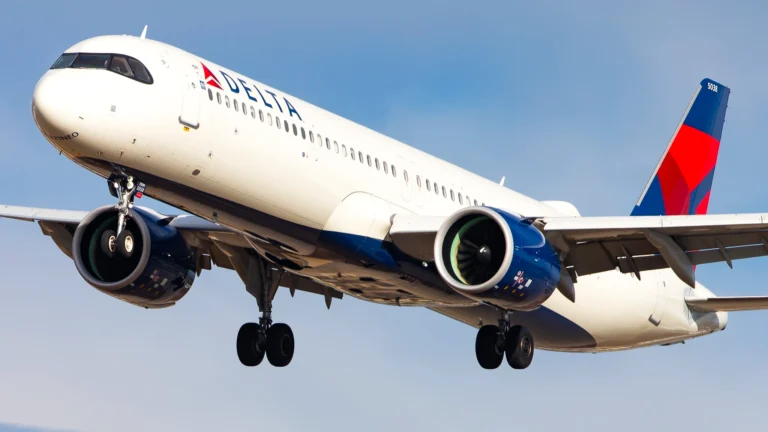ATLANTA- Delta Air Lines (DL), renowned for its expansive network and operational efficiency, remains one of the largest airlines, and its busiest domestic routes provide an insightful view into how the airline optimizes its connectivity across the country. From Atlanta (ATL), its global hub, to major cities like Los Angeles (LAX), Miami (MIA), and New York (JFK), Delta’s domestic network aligns to meet both the high-volume needs of business travelers and the leisure-driven demand that peaks throughout the year.
At the core of Delta’s strategy is its focus on high-frequency flights between its key hubs and vital regional markets. The airline understands the importance of connecting passengers with ease across the United States, not just through direct routes, but by strategically positioning itself to serve some of the most popular routes in the country.
In this article, we’ll explore the top 30 busiest domestic routes of Delta Air Lines, focusing on how the airline has adapted to consumer demand, economic shifts, and the ever-changing landscape of air travel.
Delta 30 Busiest Domestic Routes
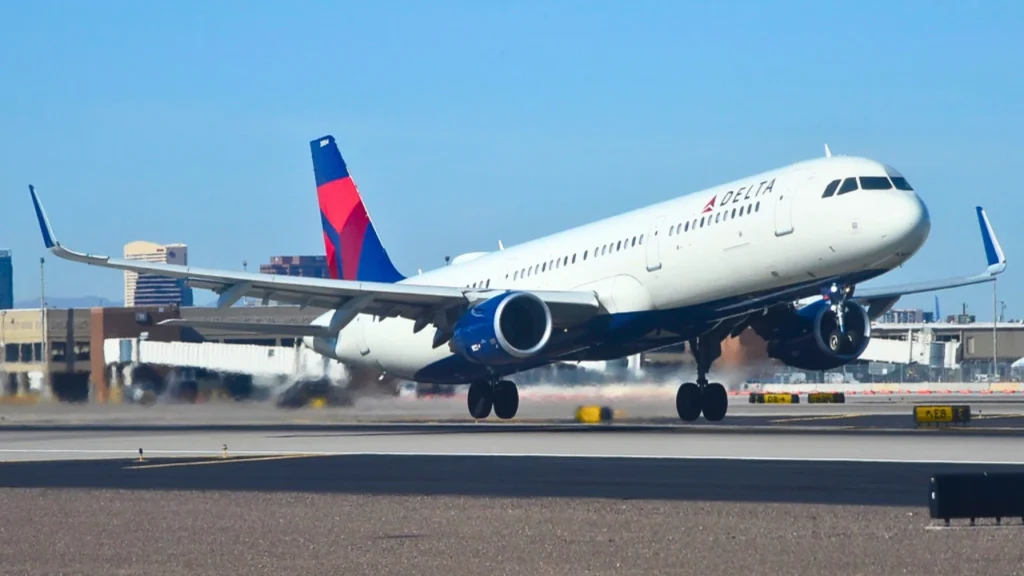
Atlanta Airport: One Hub to Rule Them All
It’s no surprise that Atlanta Hartsfield-Jackson International Airport (ATL), Delta’s mega hub, dominates the busiest domestic routes. In fact, 29 of the top 30 busiest routes originate from or arrive at ATL. That’s a remarkable statistic, underscoring just how central Atlanta is to Delta’s entire domestic operation.
With over 2,700 monthly flights and more than half a million seats between Atlanta and Orlando (MCO) alone, Delta is clearly doubling down on volume. The ATL–MCO route tops the list, with nearly 224 million available seat miles (ASMs), despite its relatively short length. This is a leisure-heavy corridor, serving Florida-bound tourists, families headed to theme parks, and spring breakers.
What makes this even more interesting is the consistency of volume on short- and medium-haul sectors. Atlanta’s connections to cities like Fort Lauderdale, Tampa, West Palm Beach, Jacksonville, and Miami all show extraordinarily high frequencies, offering over 300,000 monthly seats.
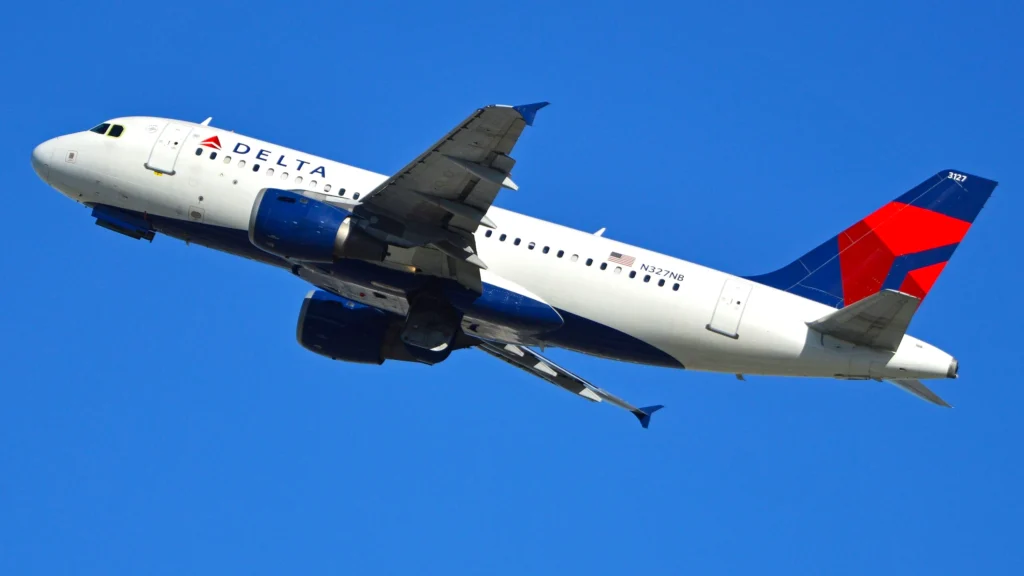
High-Frequency Operations
Delta’s domestic network strategy leans heavily on high-frequency, short-haul operations. This is particularly evident in markets like Atlanta–New York LaGuardia (LGA), Atlanta–Washington National (DCA), and Atlanta–Charlotte (CLT). These routes aren’t just busy because of demand, but they’re busy because Delta floods the market with frequency, catering to business travelers who prioritize schedule flexibility above all else.
This “shuttle-style” scheduling gives Delta a competitive advantage, especially in business-centric corridors. For instance, ATL–LGA operates more than 2,200 flights monthly, with ASMs north of 327 million. That’s more capacity than many transcontinental markets, despite being just over 750 miles in distance.
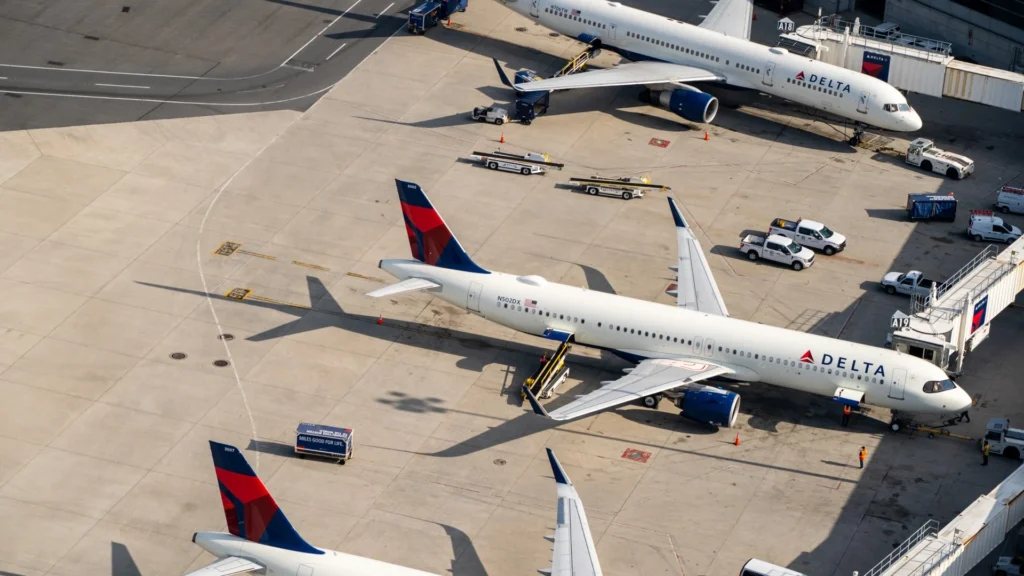
Florida: The Undisputed Leader in Demand
Delta’s monthly schedule tells another clear story – Florida is king in domestic demand. Of the top 10 busiest routes, five connect Atlanta to Florida cities. These include Orlando, Fort Lauderdale, Tampa, West Palm Beach, and Miami. Together, these five routes account for more than 2.1 million monthly seats and nearly 1 billion ASMs.
This isn’t just seasonal demand. It’s a structural feature of Delta’s network that reflects the enduring magnetism of Florida as a travel destination. With both leisure and VFR (visiting friends and relatives) traffic driving volume, these routes remain perennial heavyweights on Delta’s books.
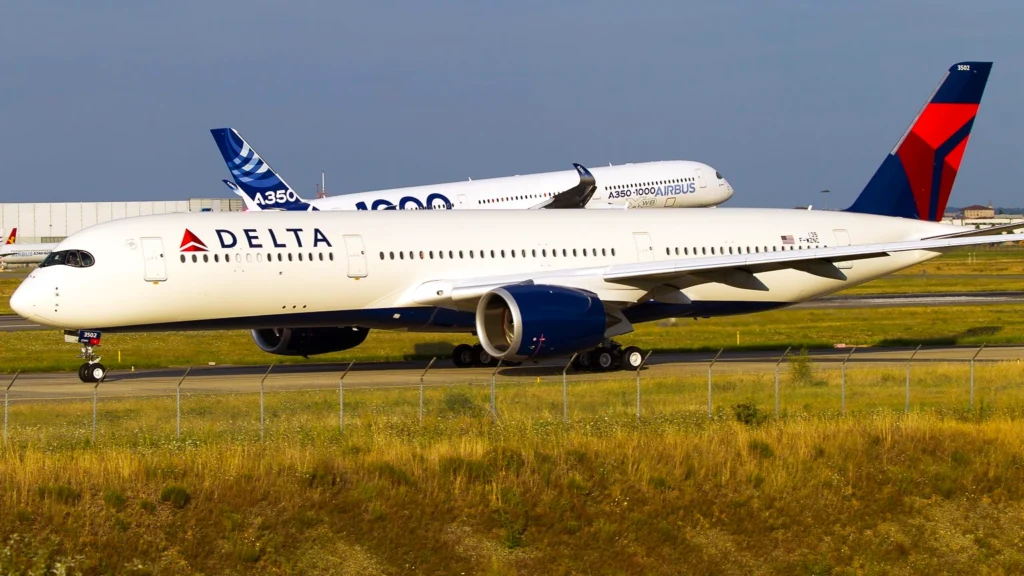
Long-Haul in a Short-Haul World
While short routes make up the bulk of the list, a handful of long-haul transcontinental or near-transcontinental routes still command major seat capacity and high ASMs.
The standout is Los Angeles (LAX) to New York-JFK, the only route in the top 30 that doesn’t involve Atlanta. With 1,528 flights and nearly 850 million ASMs, this high-profile business route is in a league of its own. It’s one of the few markets where Delta competes fiercely with both American and JetBlue, and the carrier often deploys premium-heavy widebodies or A321neos to maintain its edge.
Similarly, routes like Atlanta–Las Vegas, Atlanta–Los Angeles, and Atlanta–Salt Lake City round out the high-ASM end of the list. While they don’t boast the same frequency as Florida or Northeast sectors, they deliver value through aircraft size and flight distance.
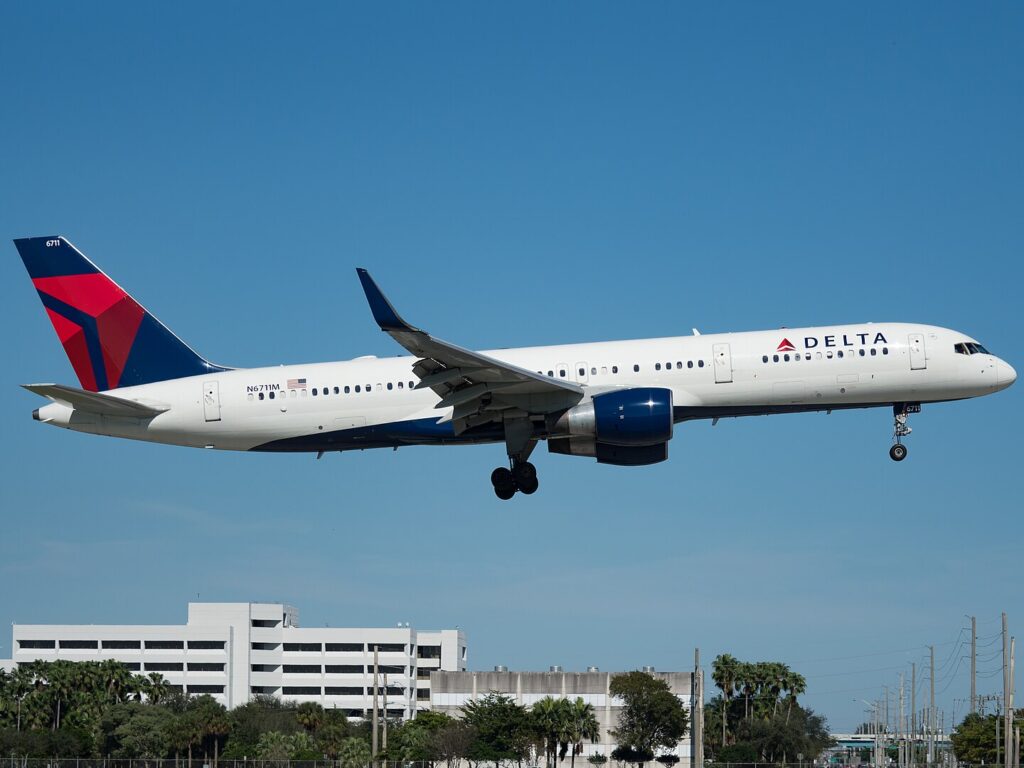
Delta’s Point-to-Point? Barely
Delta is often praised for maintaining a balanced network, including some point-to-point flying. But if this data set reveals anything, it’s that Delta’s hub-and-spoke model remains firmly intact, with Atlanta at the center of nearly everything. Even Los Angeles–New York serves as an outlier rather than a trend.
Interestingly, cities like Minneapolis (MSP), Detroit (DTW), and Salt Lake City (SLC)—which are also Delta hubs—appear only occasionally in the top 30. The heavy focus on ATL suggests Delta prefers consolidating its volume into a single powerhouse hub, from which spokes radiate with machine-like efficiency.
Many of the busiest domestic routes, especially those along the East Coast, are highly competitive. Delta’s schedule between Atlanta and New York, Boston, Washington, D.C., and Philadelphia puts it in direct competition with American and JetBlue.
In Florida, Southwest and Spirit are often the main competitors, but Delta carves out its advantage through a combination of higher frequency, brand loyalty, and access to better gate space at high-demand airports.
List of Delta Air Lines Busiest Domestic Routes:
| Rank | Route | Flights | Seats | ASMs |
| 1 | Atlanta (ATL) – Orlando (MCO) | 2,739 | 556,972 | 224,459,716 |
| 2 | Atlanta (ATL) – New York-LaGuardia (LGA) | 2,262 | 430,972 | 327,969,692 |
| 3 | Atlanta (ATL) – Fort Lauderdale (FLL) | 2,188 | 433,705 | 251,982,605 |
| 4 | Atlanta (ATL) – Tampa (TPA) | 2,154 | 430,277 | 174,692,462 |
| 5 | Atlanta (ATL) – Washington-National (DCA) | 1,895 | 327,651 | 179,225,097 |
| 6 | Atlanta (ATL) – West Palm Beach (PBI) | 1,796 | 343,217 | 187,053,265 |
| 7 | Atlanta (ATL) – Jacksonville (JAX) | 1,794 | 342,264 | 92,411,280 |
| 8 | Atlanta (ATL) – Los Angeles (LAX) | 1,715 | 364,264 | 708,857,744 |
| 9 | Atlanta (ATL) – Miami (MIA) | 1,701 | 337,646 | 200,899,370 |
| 10 | Atlanta (ATL) – Detroit (DTW) | 1,687 | 323,278 | 192,027,132 |
| 11 | Atlanta (ATL) – Raleigh/Durham (RDU) | 1,620 | 291,240 | 103,681,440 |
| 12 | Atlanta (ATL) – New Orleans (MSY) | 1,614 | 305,065 | 129,652,625 |
| 13 | Atlanta (ATL) – Las Vegas (LAS) | 1,615 | 324,748 | 567,334,756 |
| 14 | Atlanta (ATL) – Boston (BOS) | 1,549 | 291,701 | 275,949,146 |
| 15 | Atlanta (ATL) – Fort Myers (RSW) | 1,527 | 287,814 | 148,224,210 |
| 16 | Los Angeles (LAX) – New York-JFK (JFK) | 1,528 | 342,277 | 847,135,575 |
| 17 | Atlanta (ATL) – Minneapolis/Saint Paul (MSP) | 1,506 | 294,684 | 266,983,704 |
| 18 | Atlanta (ATL) – Newark (EWR) | 1,476 | 232,949 | 173,547,005 |
| 19 | Atlanta (ATL) – Salt Lake City (SLC) | 1,459 | 282,147 | 448,331,583 |
| 20 | Atlanta (ATL) – Nashville (BNA) | 1,404 | 239,179 | 51,184,306 |
| 21 | Atlanta (ATL) – Charlotte-Douglas (CLT) | 1,376 | 151,360 | 34,358,720 |
| 22 | Atlanta (ATL) – Memphis (MEM) | 1,376 | 228,095 | 75,727,540 |
| 23 | Atlanta (ATL) – Birmingham (BHM) | 1,363 | 213,330 | 28,586,220 |
| 24 | Atlanta (ATL) – Dallas/Fort Worth (DFW) | 1,362 | 243,930 | 178,556,760 |
| 25 | Atlanta (ATL) – Charleston (CHS) | 1,348 | 228,517 | 59,185,903 |
| 26 | Atlanta (ATL) – Savannah (SAV) | 1,347 | 218,707 | 47,022,005 |
| 27 | Atlanta (ATL) – Austin (AUS) | 1,325 | 251,530 | 204,493,890 |
| 28 | Atlanta (ATL) – Philadelphia (PHL) | 1,321 | 252,936 | 168,202,440 |
| 29 | Atlanta (ATL) – Baltimore (BWI) | 1,316 | 248,298 | 143,019,648 |
| 30 | Atlanta (ATL) – Denver (DEN) | 1,275 | 243,525 | 291,986,475 |
| 31 | Atlanta (ATL) – Greenville/Spartanburg (GSP) | 1,233 | 170,636 | 26,107,308 |
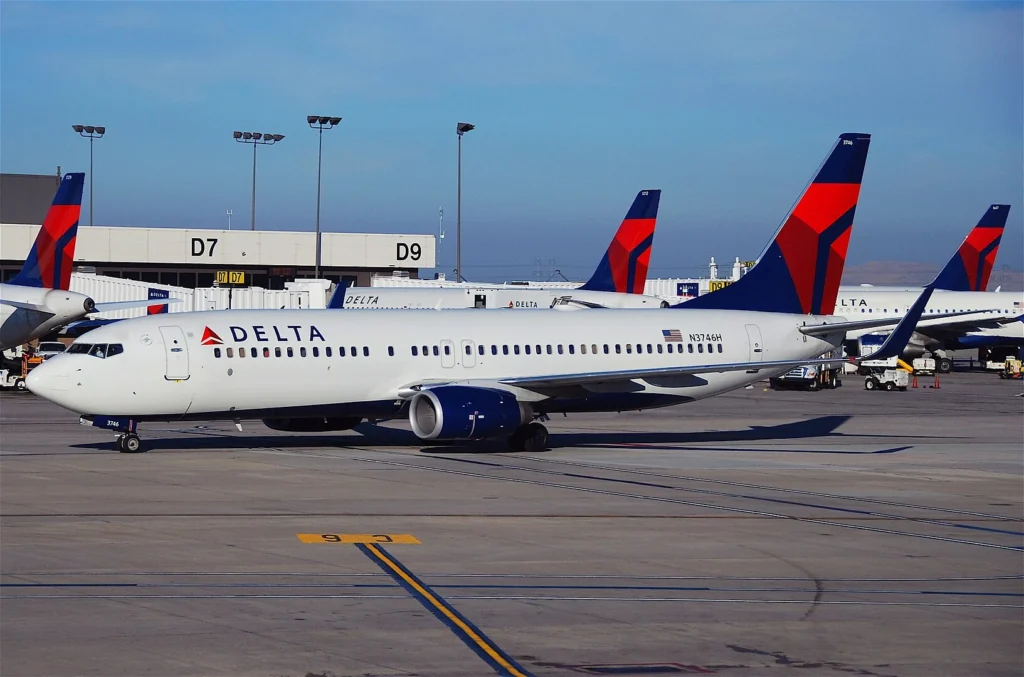
The Bottom Line
If there’s a single takeaway, it’s this: Atlanta isn’t just Delta’s hub—it’s the airline’s heartbeat.
From quick hops to Jacksonville and Birmingham to long-range flights to Los Angeles and Denver, the carrier’s ability to fill flights and sustain frequencies in a competitive landscape remains a core pillar of its U.S. dominance.
Moreover, Delta also appears to be betting on volume over margin in many of these routes. With short stage lengths and low ASMs per seat, profitability depends on maintaining high load factors and operational reliability—both areas in which Delta generally excels.
Stay tuned with us. Further, follow us on social media for the latest updates.
Join us on Telegram Group for the Latest Aviation Updates. Subsequently, follow us on Google News
Data Sourced from Cirium Diio

